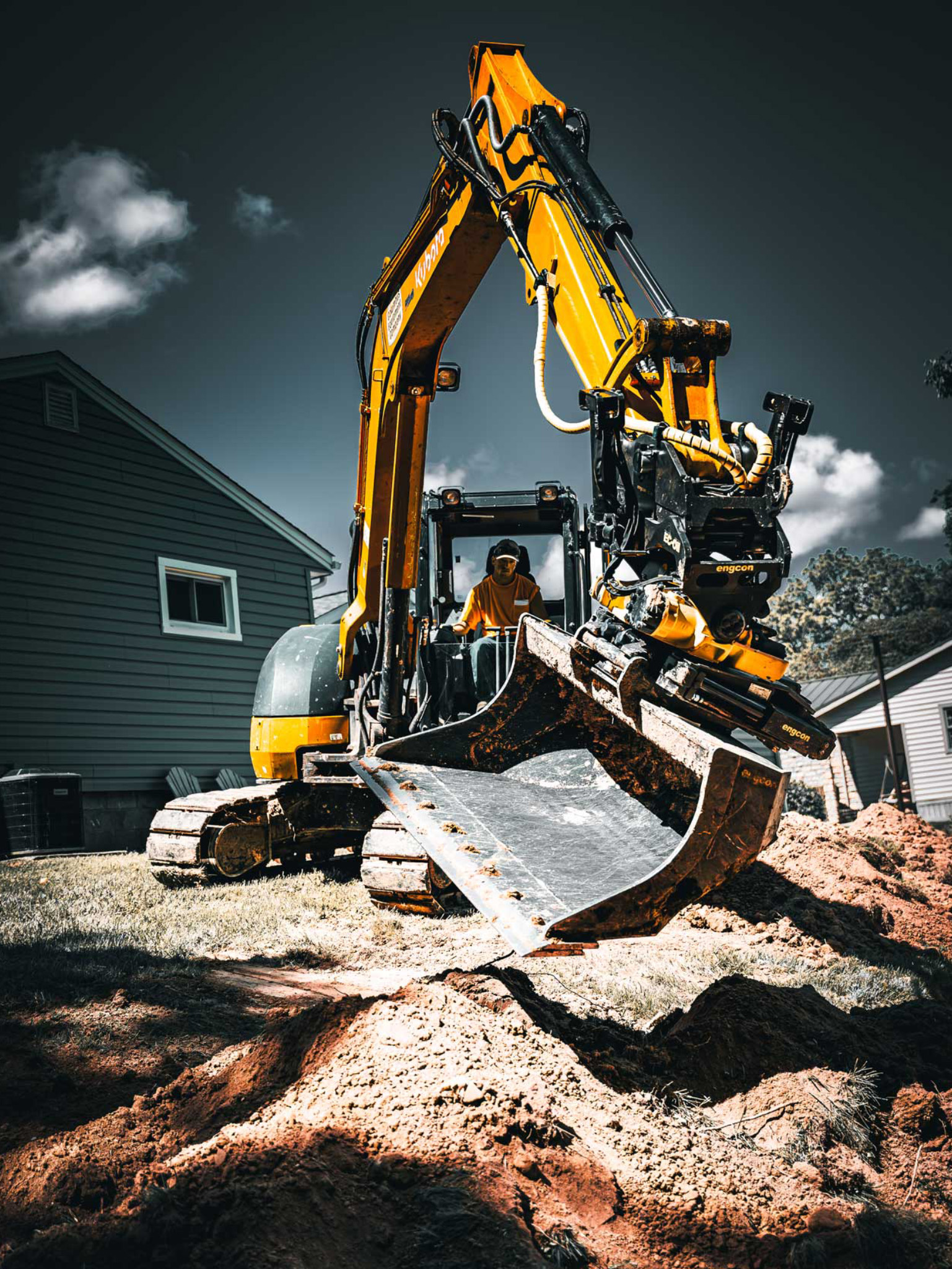Septic Ohio - Comprehensive Septic System Providers in Ohio
Septic Ohio - Comprehensive Septic System Providers in Ohio
Blog Article
Extensive Exploration: The Scientific Research Behind Superior Excavation Practices
The world of excavation methods is a domain name where scientific research links with workmanship to unearth the secrets hidden below the earth's surface. From old hand tools to modern-day hydraulic excavators, the evolution of excavation strategies has been a testament to human ingenuity and technological advancements. Nevertheless, what absolutely establishes remarkable excavation techniques apart is a deep understanding of geological principles, paired with the utilization of sophisticated devices and techniques. By exploring the science behind these practices, we can uncover the keys that lie underneath our feet and value the accuracy and experience that go right into every dig.
Development of Excavation Methods
Throughout history, the development of excavation techniques has actually played a critical function beforehand construction practices and historical explorations. From the simple tools used by our forefathers to the innovative machinery employed in modern times, the progression of excavation techniques has substantially changed just how we approach various jobs.
In ancient times, manual work with standard devices such as pickaxes, wheelbarrows, and shovels was the main technique of excavation. This labor-intensive procedure limited the deepness and scope of excavations, typically leading to slow-moving progression and limited accessibility to particular websites. As civilizations progressed, so did the techniques and tools utilized for excavation.
The Industrial Change noted a transforming factor in excavation techniques with the intro of steam-powered machinery. In modern times, innovation plays an essential duty in excavation, with innovations like GPS systems, drones, and 3D scanning enhancing accuracy and performance in the area.
Function of Technology in Excavation

The integration of advanced modern technology has actually fundamentally changed the field of excavation, enhancing precision and effectiveness to unmatched levels. Among the essential technical innovations that has actually substantially impacted excavation methods is the utilization of general practitioner systems. These systems allow for accurate mapping of excavation sites, allowing drivers to properly find below ground utilities and frameworks. Furthermore, using telematics in excavation tools has made it possible for real-time surveillance of device efficiency, causing proactive upkeep and raised operational productivity.
In addition, the advent of 3D modeling and simulation software has streamlined the planning process for excavation tasks. Engineers and drivers can now imagine the whole excavation process before beginning, determining potential obstacles and maximizing workflow. Combined with this, the implementation of drones in excavation activities has actually promoted aerial surveys, volumetric measurements, and site evaluations with unrivaled rate and accuracy.
Geological Principles in Excavation
An understanding of geological principles is important for ensuring the architectural stability and security of excavation sites. Geological factors play a crucial function in identifying the expediency and safety and security of excavation projects (lancaster excavation). One their website key geological concept to consider is the kind of dirt or rock present at the site. Various dirt types, such as gravel, clay, or sand, have varying degrees of security and call for various excavation methods. As an example, natural dirts like clay might require additional support to avoid collapses, while sandy dirts might be prone to erosion throughout excavation.
By conducting detailed geological studies and evaluation, engineers and excavators can develop strategies to alleviate dangers and click this link make sure the effective completion of excavation jobs. Inevitably, integrating geological principles into excavation methods is important for attaining secure, efficient, and lasting results.

Newest Devices for Excavation
In the world of excavation techniques, modern advancements in tools have revolutionized the performance and accuracy of excavation procedures. One of the current devices making waves in the industry is making use of drones geared up with advanced imaging innovation. These drones can supply thorough airborne surveys of excavation websites, offering real-time information on topography and potential dangers. This details help in better planning and decision-making during the excavation procedure.
Another cutting-edge device gaining popularity is the implementation of 3D printing modern technology for developing personalized excavation devices. This allows for the production of specialized tools that are tailored to the certain needs of a task, boosting effectiveness and lowering downtime.
Moreover, developments in products scientific research have actually caused the development of more powerful and much more sturdy excavation tools. lancaster trenching. Tungsten carbide-tipped excavator attachments, for instance, offer premium performance in challenging ground problems, boosting productivity on-site
Scientific research's Impact on Excavation Practices

Furthermore, clinical research study on dirt technicians and geotechnical engineering has given beneficial understandings into dirt behavior, allowing excavation experts to go to my blog make educated choices concerning excavation approaches and soil stabilization strategies. On the whole, science proceeds to drive technology and improvement in excavation methods, making excavation tasks more effective, cost-efficient, and sustainable.

Verdict
Finally, the advancement of excavation methods has been considerably influenced by innovations in innovation and a deeper understanding of geological principles. The most up to date tools and devices made use of in excavation have enhanced effectiveness and accuracy in the area. The application of clinical understanding has dramatically improved excavation techniques, leading to more lasting and effective methods for digging deep into numerous kinds of materials.
In the realm of excavation practices, modern advancements in devices have actually transformed the effectiveness and accuracy of excavation processes. By leveraging clinical concepts, the excavation industry has been able to considerably enhance effectiveness, accuracy, and safety in excavation processes. GPR allows excavation groups to non-invasively scan and map subsurface structures, energies, and possible dangers, enabling them to intend excavation tasks with better precision and reduced threat of mishaps.
Additionally, scientific study on dirt mechanics and geotechnical engineering has actually given important understandings into dirt actions, permitting excavation experts to make enlightened choices concerning excavation approaches and dirt stabilization strategies. Generally, science continues to drive development and improvement in excavation techniques, making excavation jobs more effective, affordable, and lasting.
Report this page